General Performance & Encoding
The 3DMark series of benchmarks developed and provided by FutureMark are among the most widely used tools for benchmark reporting and comparisons. Although the benchmarks are very useful for providing apple to apple comparisons across a broad array of GPU and CPU configurations, they are not a substitute for actual application and gaming benchmarks. In this sense we consider the 3DMark benchmarks to be purely synthetic in nature but still valuable for providing consistent measurements of performance.
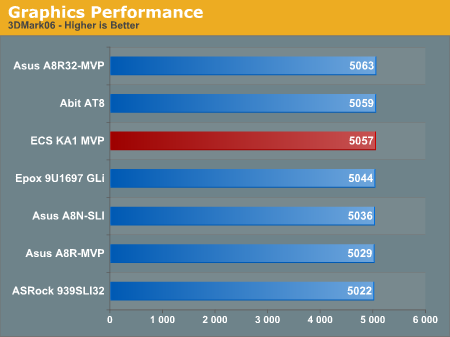
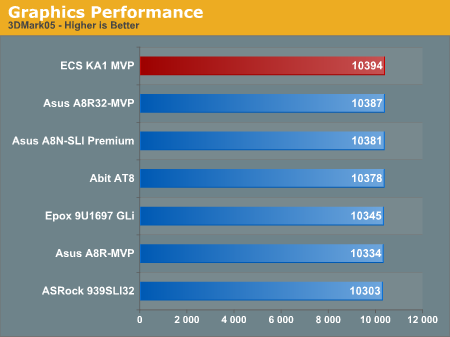
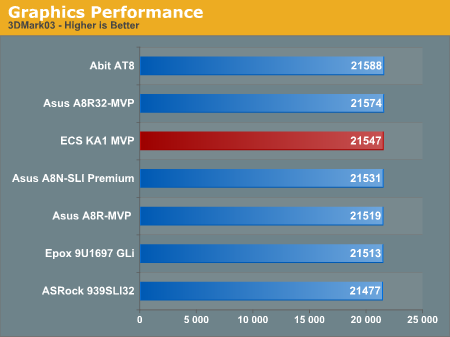

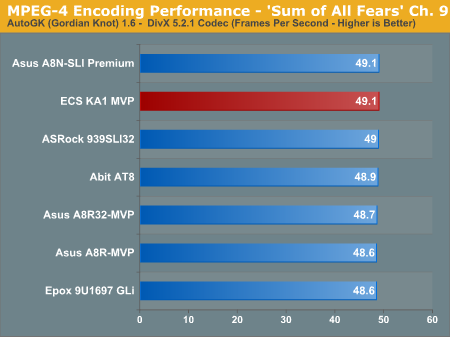
The ECS KA1 MVP is very competitive in the synthetic benchmarks with scores consistently in the top range. The encoding performance is more CPU related than the choice of core logic chips in this benchmark.
Memory Performance
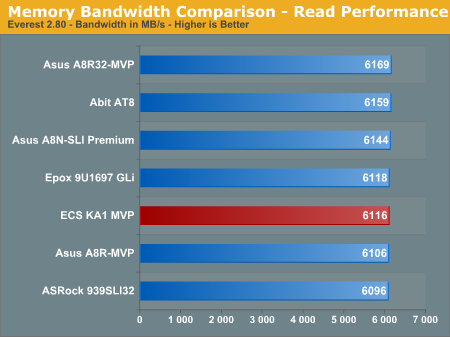
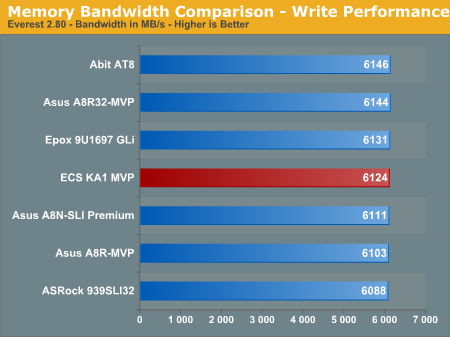
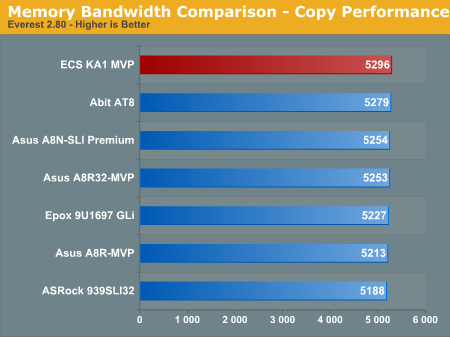
We recently switched to version 2.80 of Everest so these scores are not comparable to previous tests with version 2.50. We have also added the memory copy bandwidth benchmark to out test suite. The read, write, and copy scores of the ECS KA1 MVP are typical for an ATI based chipset.
The 3DMark series of benchmarks developed and provided by FutureMark are among the most widely used tools for benchmark reporting and comparisons. Although the benchmarks are very useful for providing apple to apple comparisons across a broad array of GPU and CPU configurations, they are not a substitute for actual application and gaming benchmarks. In this sense we consider the 3DMark benchmarks to be purely synthetic in nature but still valuable for providing consistent measurements of performance.





The ECS KA1 MVP is very competitive in the synthetic benchmarks with scores consistently in the top range. The encoding performance is more CPU related than the choice of core logic chips in this benchmark.
Memory Performance



We recently switched to version 2.80 of Everest so these scores are not comparable to previous tests with version 2.50. We have also added the memory copy bandwidth benchmark to out test suite. The read, write, and copy scores of the ECS KA1 MVP are typical for an ATI based chipset.










23 Comments
View All Comments
Wesley Fink - Tuesday, April 4, 2006 - link
A video shunt card is the PCB card used in some Crossfire designs for the second x8 slot when you want the other video slot to be x16. When the card is out you have 2 x8 slots, when it's in you have one x16. nVidia uses a similar "paddle" card on their nForce4 SLI design.ATI also has a BIOS switching option on more expensive Crossfire boards. It turned out the simple paddle was the most trouble-free on the Rx480 Crossfire, but most RD580 use the BIOS-switching design and have been trouble-free.
Beenthere - Tuesday, April 4, 2006 - link
SOS, DD.STILL not ready for Prime time but an "E" for effort with an updated BIOS.
Skip the ATI chipset S939 mobos - they are all flops. Hopefully the socket AM2 mobos will be far better than the S939 ATI based crap. ATI must be really disappointed in the Asian mobo makers who refused to deliver a properly operating mobo.
rjm55 - Tuesday, April 4, 2006 - link
Ever since I read about nVidia paying people to post anti-ATI stuff on Forums I've wondered. Do you suppose it's in NV's interest to drum up that the ATI chipset is immature? I only ask cause the same two names always post crap comments about ATI and the A8R-MVP every time a motherboard review goes up at AT.I also bought an A8R-MVP. I was disappointed it required 2T Command Rate above about 260 until I realized the 2T on Asus was just as fast as iT on other boards. At 2T i reached 320. I haven't had a problem other than that and it's the best $95 I ever spent on a board. I liked it so much I bought an A8R32-MVP which I like ever better.
Why don't you jerks that trash these ATI boards tell us SPECIFICALLY what is wrong and provide some evidence so others can take a look at your problems and fix them for you?